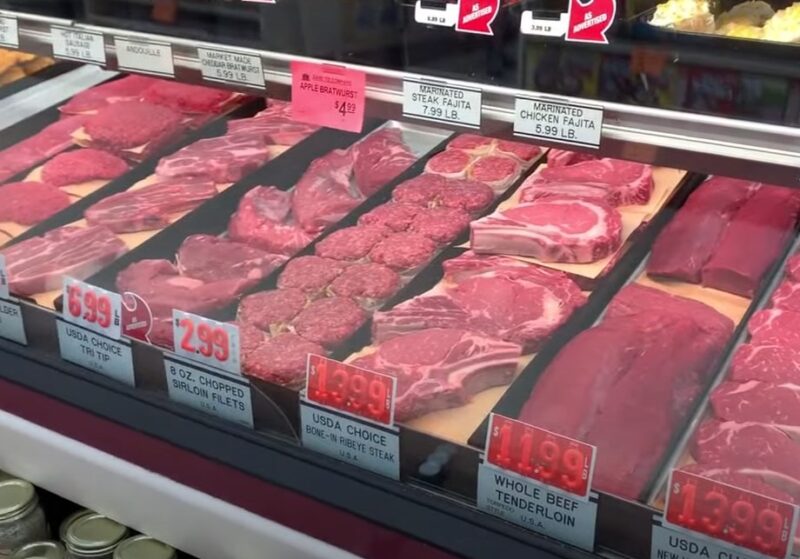Are you wondering how much to pay for brisket? In this guide, I’ll unravel the mystery behind brisket prices and provide tips to ensure you get the best savory brisket within your budget.
Key Takeaways:
- Brisket prices can vary depending on factors such as location, season, and quality.
- The average price of brisket is around $5 per pound, but prices can range from less than $2 per pound to as high as $20 per pound.
- Buying in bulk from big-box retailers like Costco or Restaurant Depot can help lower the cost.
- The quality of the brisket, such as grass-fed or Prime designation, can affect the price.
- Brisket prices tend to increase during the summer due to increased demand and limited supply.
Factors Affecting Brisket Prices
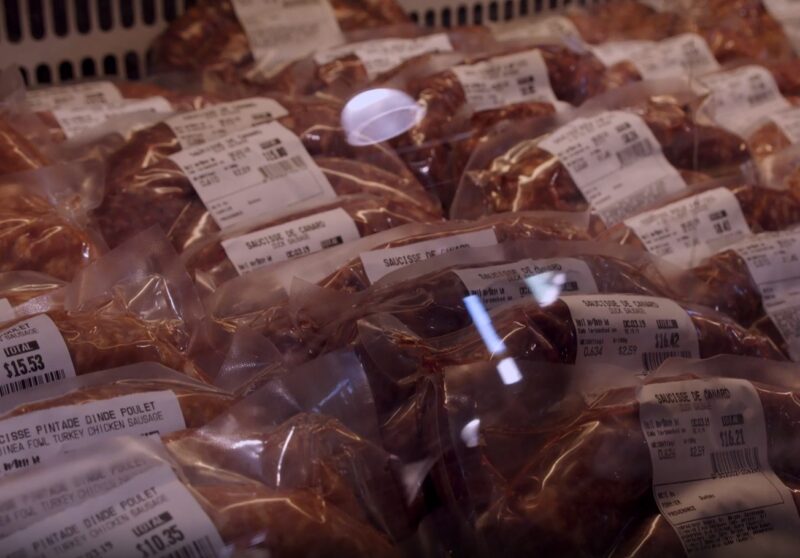
Brisket prices can vary significantly due to various factors, including location, season, and quality. Understanding these factors is crucial to making an informed decision when purchasing brisket.
Location plays a significant role in determining the price of brisket. In areas where beef production is abundant, such as Texas, brisket prices are generally lower due to the local supply. On the other hand, in regions where beef is imported or in high demand, the prices can be higher.
Seasonal fluctuations also affect brisket prices. During the summer months, when barbecues and smokers are in high demand, brisket prices tend to increase. This is because more people are purchasing brisket for outdoor gatherings, leading to a limited supply and higher prices. In contrast, during colder months when fewer people are cooking outdoors, brisket prices may decrease.
The quality of the brisket is another important factor influencing its price. Brisket that is labeled as grass-fed or has a Prime designation is generally of higher quality and commands a higher price. These designations indicate that the beef comes from well-raised animals and has superior marbling, resulting in a more tender and flavorful brisket.
| Factors | Impact on Brisket Prices |
|---|---|
| Location | Can affect prices based on local supply and demand |
| Season | Prices tend to increase during summer months |
| Quality | Higher quality brisket commands a higher price |
Summary:
- Brisket prices can vary significantly based on location, season, and quality
- Location influences prices due to local supply and demand
- Seasonal fluctuations impact prices, with higher demand during summer months
- Quality designations like grass-fed or Prime can increase the price of brisket
By considering these factors, you can make a more informed decision when purchasing brisket and ensure that you find the best option within your budget. Whether you’re planning a budget-friendly barbecue or looking for a premium cut, understanding the factors affecting brisket prices will help you navigate the market and find the perfect brisket for your needs.
Average Price of Brisket
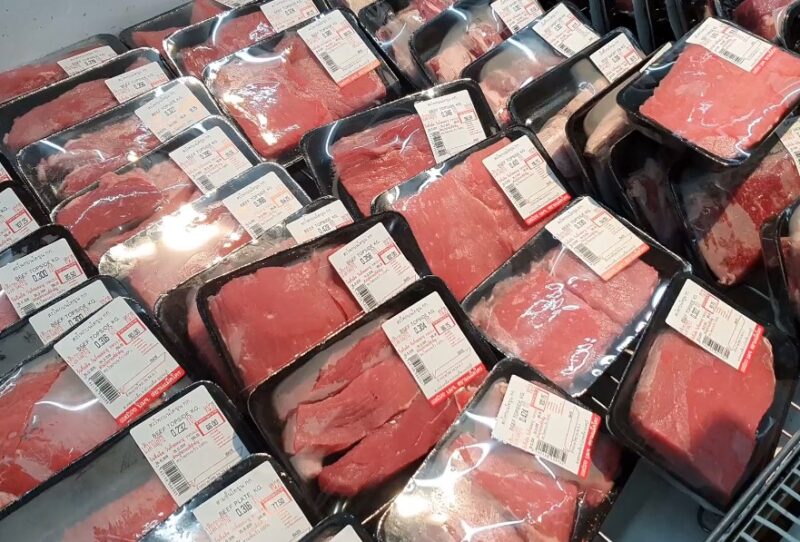
On average, you can expect to pay around $5 per pound for brisket, but it’s important to note that prices can deviate from this average. Factors such as location, season, and quality can affect the price of brisket.
When it comes to buying brisket, prices can range from less than $2 per pound to as high as $20 per pound. The wide variability of prices means that it’s crucial to consider your budget and desired quality when making a purchase.
If you’re looking for a more budget-friendly option, consider buying brisket in bulk from big-box retailers like Costco or Restaurant Depot. Purchasing larger quantities can help lower the cost per pound, making it a suitable choice for those on a tighter budget.
| Factors Affecting Brisket Prices | Price Range |
|---|---|
| Location | Prices can vary based on geographical location. |
| Season | Brisket prices tend to rise during the summer due to increased demand. |
| Quality | Factors such as grass-fed or Prime designation can affect the price. |
It’s also important to mention that brisket prices have been steadily increasing in recent years. The rising popularity of barbecues and smokers during the summer season, coupled with limited supply, has contributed to this upward trend in prices.
When it comes to purchasing brisket, you might find a price difference between local butchers and grocery stores. While local butchers may charge more, they often offer higher quality meat than grocery stores. It’s worth considering these options based on your desired balance of price and quality.
In conclusion, the price of brisket is influenced by a variety of factors, including location, season, quality, and cut. Understanding these factors can help you make an informed decision when purchasing brisket. Whether you’re looking for a budget-friendly option or a premium cut, consider your preferences and budget to find the perfect brisket for your needs.
Price Range of Brisket
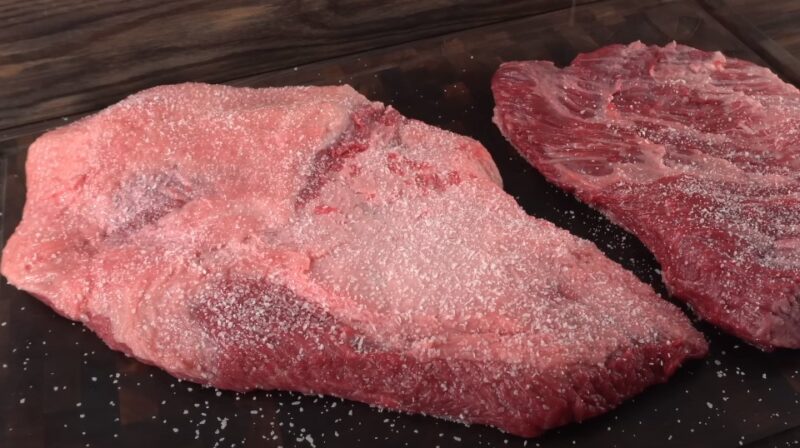
Brisket prices can vary significantly, ranging from less than $2 per pound to as high as $20 per pound, offering various options to suit different budgets. When it comes to purchasing brisket, it’s important to consider your budget and the quality of meat you desire. Choosing the right price range can help you find a brisket that meets your taste preferences without breaking the bank.
Here is a breakdown of the price range for brisket:
| Price Range | Description |
|---|---|
| Less than $2 per pound | Brisket in this price range is often found at discount supermarkets or during sales. While it may not offer the highest quality, it can still be a tasty option for budget-conscious consumers. |
| Around $5 per pound (Average Price) | This is the average price range for brisket. You can expect good quality and flavor at this price point. It’s a safe choice for most consumers. |
| Above $10 per pound | Brisket in this price range is generally of higher quality, often grass-fed or USDA Prime. It may have a more pronounced flavor and tenderness, making it a great choice for special occasions or discerning palates. |
When considering the price range, it’s important to keep in mind that location, season, and market conditions can also influence brisket prices. For example, during the summer months when barbecues are popular, brisket prices may increase due to higher demand and limited supply.
To ensure you make the most of your budget, consider buying in bulk from big-box retailers like Costco or Restaurant Depot. Purchasing larger quantities can help lower the cost per pound and allow you to stock up on brisket for future meals. Additionally, you may want to explore local butchers as they often offer higher quality meat, although the prices may be slightly higher compared to grocery stores.
By understanding the price range of brisket and considering factors such as quality, location, and season, you can make an informed decision when purchasing brisket that aligns with your budget and taste preferences.
Buying Bulk for Lower Cost
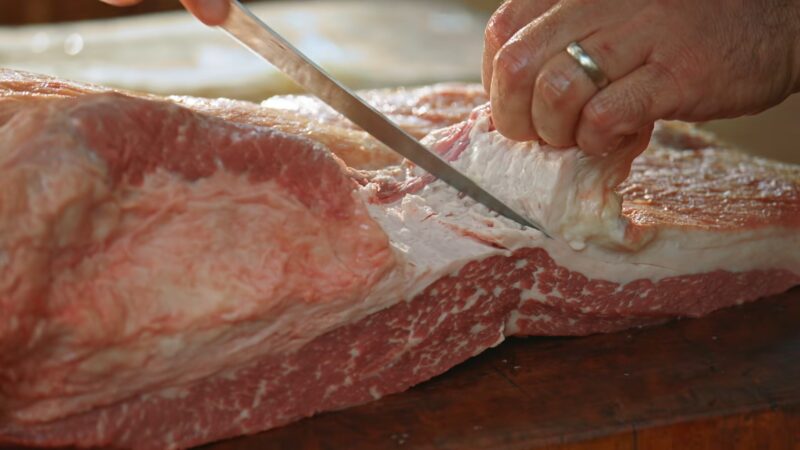
If you’re looking to save on brisket, consider buying in bulk from retailers like Costco or Restaurant Depot, as purchasing larger quantities often leads to lower costs. These big-box retailers offer a wide selection of brisket cuts at competitive prices, making it a cost-effective option for those who need to feed a crowd or are looking to stock up for future meals.
When buying in bulk, it’s important to plan ahead and consider your storage options. Brisket can be frozen for later use, allowing you to take advantage of bulk discounts without worrying about spoilage. Just make sure to properly package and label the brisket to maintain its quality and freshness.
Buying in bulk not only saves you money, but it also gives you the flexibility to experiment with different cooking methods and recipes. You can portion the brisket into smaller cuts to try out different cooking techniques, such as smoking, slow-cooking, or braising. This way, you can discover your preferred method of preparation without breaking the bank.
| Retailer | Price per Pound | Quantity | Total Cost |
|---|---|---|---|
| Costco | $3.99 | 10 pounds | $39.90 |
| Restaurant Depot | $2.49 | 20 pounds | $49.80 |
As shown in the table above, buying in bulk can provide significant savings compared to purchasing smaller quantities. However, do keep in mind the storage space required and the shelf life of the brisket. It’s always a good idea to check the packaging for any special instructions or recommendations regarding storage and expiration dates.
Quality and Price
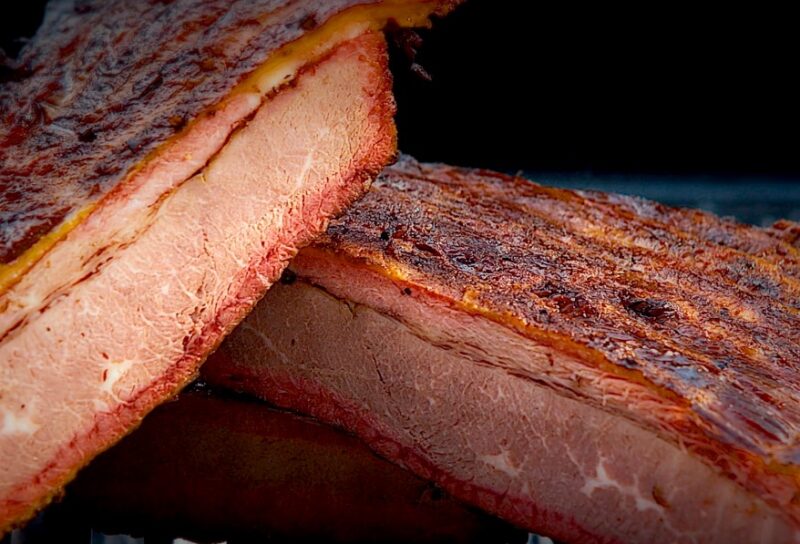
The quality of brisket, such as whether it’s grass-fed or has a Prime designation, can significantly impact the price, as higher quality often comes at a higher cost. Grass-fed brisket, for example, is known for its rich flavor and tenderness, but it can be more expensive than conventionally raised brisket. Similarly, brisket with a Prime designation, which indicates superior marbling and tenderness, can also command a higher price.
When considering the quality of brisket, it’s important to note that higher-quality cuts may require less preparation and cooking time, resulting in a more tender and flavorful end result. However, it’s worth considering your budget and preferences when deciding on the level of quality you’re seeking. While grass-fed and Prime brisket may offer exceptional taste and texture, they may not be necessary for every occasion or budget.
“I always look for grass-fed brisket for special occasions, as I love the rich and natural flavors it imparts to the meat,” says barbecue enthusiast John Smith.
“While it may be pricier, the quality is definitely worth it for those special backyard gatherings.”
By considering your specific needs and preferences, you can determine the level of quality that best fits your budget and desired taste experience.
| Quality | Price Range (per pound) |
|---|---|
| Conventional | Less than $3 |
| Grass-fed | $4 – $6 |
| Prime | More than $8 |
Ultimately, the choice between different quality levels of brisket depends on your personal taste preferences, occasion, and budget. Whether you opt for conventional, grass-fed, or Prime brisket, there are delicious options available for every price range and culinary preference.
Seasonal Price Fluctuations
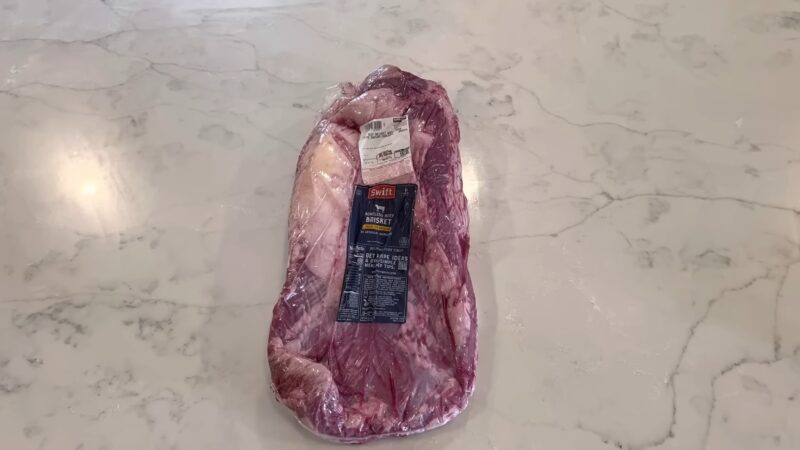
If you’re planning to buy brisket during the summer, be prepared for potential price increases, as the demand for barbecues and smokers tends to drive up brisket prices. Summer is the peak season for outdoor cooking, and many people are eager to fire up their grills and smokers to enjoy a delicious, smoky brisket. As a result, the popularity of brisket rises during this time, leading to limited supply and higher prices.
Barbecues and backyard gatherings become more frequent in the summer months, especially during holidays and weekends. This increased demand for brisket puts pressure on suppliers and increases competition among buyers. Consequently, brisket prices can fluctuate, often reaching their peak during the summer.
Factors such as the popularity of barbecue events, limited supply, and increased demand for higher-quality brisket play a significant role in driving up prices. If you’re budget-conscious, it may be beneficial to explore other options, such as buying brisket in bulk or purchasing alternative cuts of meat that are more affordable during the summer.
| Factors affecting summer brisket prices | Impact on prices |
|---|---|
| Popularity of barbecues and smokers | High demand, increased prices |
| Seasonal limited supply | Decreased availability, increased prices |
| Higher-quality brisket demand | Increased competition, higher prices |
| Competing holiday and weekend events | Increased demand, higher prices |
Being aware of these seasonal price fluctuations can help you plan your brisket purchases more effectively. If you’re looking for a budget-friendly option, consider buying brisket in advance or during off-peak seasons when prices are generally lower.
Alternatively, exploring different cuts of meat or considering local butchers who may offer better deals can also be a smart strategy to save money without compromising on flavor and quality.
Local Butchers vs. Grocery Stores
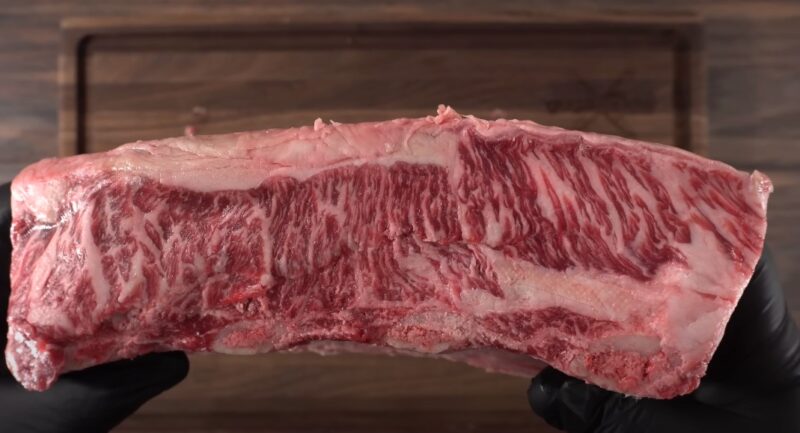
When it comes to purchasing brisket, you’ll find that local butchers may charge a bit more than grocery stores, but they often provide higher quality meat. Local butchers take pride in their craft and source their meat from trusted suppliers, ensuring that you get the best cuts available.
These butchers have the knowledge and expertise to guide you in choosing the perfect brisket for your needs and can even offer personalized recommendations based on your preferences.
Supporting Local Businesses
By choosing to buy from local butchers, you not only get superior quality meat, but you also support local businesses in your community. Local butchers are often family-owned establishments that have been serving their customers for generations.
They have a deep understanding of their craft and are passionate about delivering top-notch products and personalized service. Shopping at a local butcher shop allows you to build a relationship with the butcher, who can provide valuable advice and tips for preparing and cooking your brisket.
Price Difference and Value
While it’s true that local butchers may charge slightly higher prices for their brisket compared to grocery stores, the value they provide is worth the extra cost. The quality and taste of the meat from local butchers are often unparalleled.
They prioritize sourcing from local farms and ensure that the animals are raised in humane and sustainable conditions. This focus on quality and ethical sourcing comes at a higher price, but it guarantees a superior eating experience that you won’t find with mass-produced, generic cuts from grocery stores.
| Local Butchers | Grocery Stores | |
|---|---|---|
| Quality | Higher | Varies |
| Price | Slightly higher | Competitive |
| Expertise | Extensive knowledge | Limited guidance |
In summary, while local butchers may charge a bit more for their brisket, the higher quality, personalized service, and support for local businesses make it a worthwhile investment. The expertise and knowledge of local butchers can guide you in choosing the perfect cut for your needs, ensuring a delicious and memorable dining experience.
Different Cuts of Brisket and Pricing
Choosing the right cut of brisket is essential. Whole packer brisket offers more flavor but can be more challenging to cook, while flat cut brisket is leaner, easier to slice, and more budget-friendly.
The whole packer brisket, also known as the “packer cut,” includes both the point and flat muscles. This cut is larger and generally weighs between 12 to 17 pounds. It has a higher fat content, which contributes to its rich flavor and juiciness. However, cooking a whole packer brisket can be quite the endeavor, as it requires longer cooking times and careful attention to temperature and moisture levels. If you’re up for the challenge and want to impress with a show-stopping centerpiece, the whole packer brisket is your go-to choice.
On the other hand, the flat cut brisket, also known as the “first cut” or “thin cut,” is a leaner option. It usually weighs around 5 to 8 pounds and consists of only the flat muscle. This cut is easier to handle and slice, making it more beginner-friendly. While it may lack the same level of marbling and tenderness as the whole packer brisket, the flat cut offers a more affordable price point and can still result in a delicious and satisfying meal.
| Brisket Cut | Flavor | Cooking Difficulty | Price |
|---|---|---|---|
| Whole Packer Brisket | More flavorful | Challenging | Higher |
| Flat Cut Brisket | Leaner | Easier | More budget-friendly |
When deciding between the two cuts, consider your preferences, cooking skills, and budget. If you’re a seasoned pitmaster looking for a culinary adventure, the whole packer brisket might be worth the extra effort and cost. However, if you’re a beginner or looking to feed a crowd while keeping costs in check, the flat cut brisket is a practical choice.
Regardless of which cut you choose, keep in mind that proper cooking techniques and attention to detail are key to achieving tender and flavorful brisket. Take the time to research and try different recipes and methods until you find what works best for you. Happy brisket smoking!
Choosing the Right Size and Quality
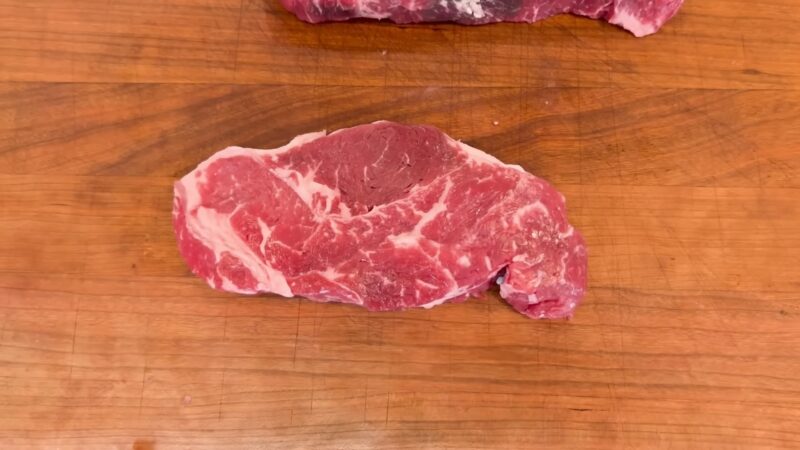
Selecting the right size of brisket is crucial to ensure you have enough to feed the desired number of people and that it suits your chosen cooking method. Additionally, factors like the presence of a good fat cap and quality connective tissue can indicate a higher-quality brisket.
When determining the size of brisket to purchase, consider the number of people you plan to serve. As a general guide, calculate about 1 pound of raw brisket per person. However, keep in mind that the brisket will lose some weight during cooking due to fat rendering and moisture evaporation. To account for this, it’s advisable to buy slightly more than the estimated weight needed.
If you’re using a cooking method that requires longer cooking times, such as smoking, it’s recommended to choose a larger brisket. This will help ensure that the meat remains moist and tender throughout the cooking process. On the other hand, if you’re planning to cook using a shorter method like grilling, a smaller brisket may be more suitable.
Table: Brisket Sizes and Serving Estimates
| Brisket Weight (pounds) | Serving Estimate |
|---|---|
| 8-10 | 8-10 people |
| 12-14 | 12-14 people |
| 16-18 | 16-18 people |
In addition to size, the presence of a good fat cap and quality connective tissue are important factors to consider when selecting a brisket. The fat cap is a layer of fat covering one side of the brisket, which helps keep the meat moist during cooking. Look for a brisket with a thick and even fat cap, as it will contribute to a more flavorful and juicy end result.
Connective tissue, also known as collagen, is responsible for the tenderness and mouthfeel of brisket. Higher-quality briskets will have a good amount of marbling and connective tissue, which will break down during cooking to result in a melt-in-your-mouth texture. When inspecting a brisket, look for marbling throughout the lean meat and well-distributed connective tissue.
By considering the right size of brisket for your needs and paying attention to factors like the fat cap and connective tissue, you’ll be on your way to selecting a delicious and high-quality brisket for your next barbecue or smoking session.
FAQ
What factors affect the price of brisket?
Factors such as location, season, and quality can influence the price of brisket.
What is the average price of brisket?
On average, brisket costs around $5 per pound.
What is the price range of brisket?
Brisket prices can range from less than $2 per pound to as high as $20 per pound.
Can buying in bulk lower the cost of brisket?
Yes, purchasing brisket in bulk from big-box retailers like Costco or Restaurant Depot can help lower the cost.
Does the quality of brisket affect the price?
Yes, the quality of brisket, such as grass-fed or Prime designation, can impact the price.
What are the differences between whole packer and flat cut brisket in terms of price?
Whole packer brisket is larger, more flavorful, and more challenging to cook, while flat cut brisket is leaner, easier to slice, and more budget-friendly.
How do I choose the right size and quality of brisket?
When choosing brisket, consider the number of people you plan to serve and the cooking method. Look for factors like the fat cap and connective tissue to determine quality.
Final Words
In conclusion, brisket prices are influenced by several factors, including location, seasonality, quality, and cut. On average, brisket costs around $5 per pound, but this can vary widely.
The choice between a whole-packer brisket and a flat cut, as well as considerations like the fat cap, can also impact both the price and the resulting meal. Being aware of these factors can guide you to the best brisket for your needs and budget.

